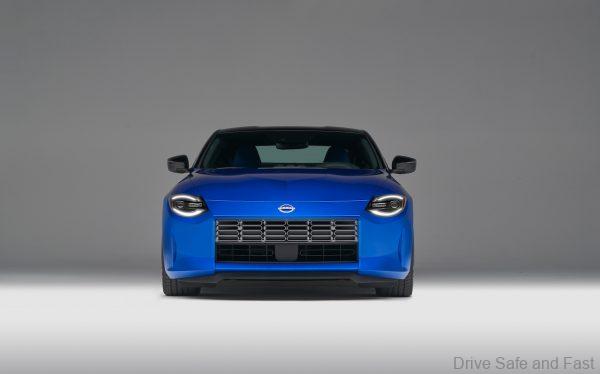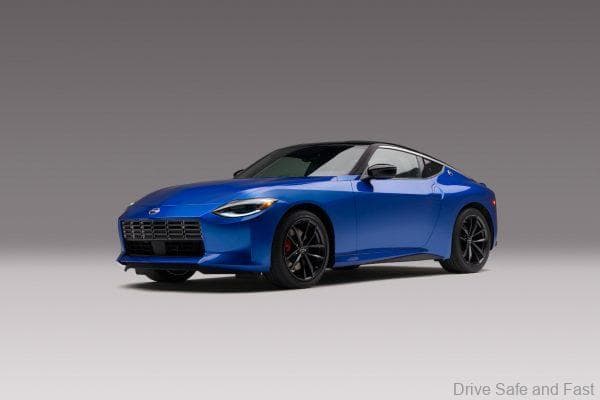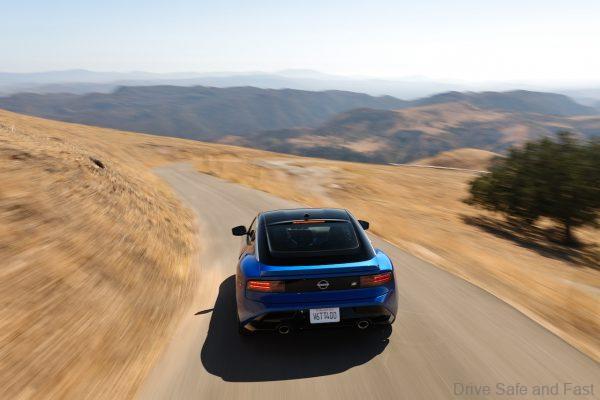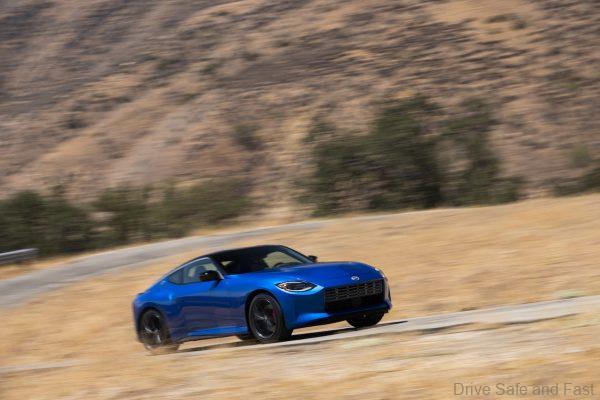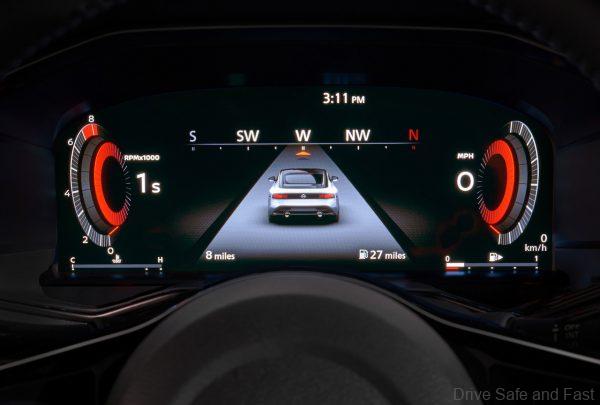The Nissan Z debuts in its US specifications.
After months of teasing, Nissan has finally revealed the new 7th generation Z car. Unlike its predecessors, the new Nissan Z is not marketed with a 3-digit prefix.
Many expected it to be called the 400Z, owing to the accurately projected 400 horsepower engine output. However, Nissan have gone another route by simply calling it the ‘Z’.

New Turbo Heart New Nissan Z
With the new Z, Nissan has had to move away from the 3.7-litre V6 of the outgoing 370Z and into smaller, turbocharged territory. The new Z is powered by a 3.0L twin turbo V6 engine with 30% more torque than the last engine and an increase of 68 hp versus its predecessor.

Its total output is 400 horsepower and 475Nm of torque at 5,600 rpm. This engine has the designation VR30DDTT – VR engine family, 3000cc, dual cam, Direct Injection, Twin Turbo.

Performance Enhanced Z
Transmission options are between a 6-speed manual and a 9-speed conventional automatic, which both send power to the rear wheels. Z cars equipped with the 6-speed manual are also fitted with a carbon-fibre composite driveshaft and have Downshift Rev Matching. The manual gearbox includes a new advanced launch assist control system on the Performance grade vehicle which delivers smoother acceleration from a standstill. All automatic transmissions also feature this system as standard.

The automatic transmission has a Sport mode which also improves acceleration and changes the steering and active sound enhancement profiles, as well as loading a different vehicle dynamic control setting. The Z Performance Grade also uses a mechanical clutch-type limited-slip differential.

The Nissan engineers worked to deliver better handling and high-speed driving performance. The new Z has higher body rigidity, wider front tires and new, larger-diameter monotube shock absorbers, as well as new geometry on the front double-wishbone suspension. All of this helps them achieve their goal of 13% better cornering performance.
Nissan Z Exterior Design
The all-new Z brings together the past and future of the Nissan Z car. While the proportions and overall shape are shared with the latest 350Z and 370Z cars, the front elements are clearly inspired by the first 240 ZG while the rear taillights take inspiration from the Z32 300ZX. The design inspiration is married to high-tech touches, such as giving the LED taillight graphic a 3D look.

On the Z Performance variant, a rear spoiler is integrated as part of the design.
3 monotone and 6 dual-tone colours are available on the Nissan Z at launch, including two new colours, Seiran Blue and Ikazuchi Yellow with the Super Black roof.

The limited-edition Z Proto spec features yellow brake callipers with Z logos as well as bronze-coloured aluminium alloy wheels. Only 240 of these will be made.
Nissan Z Interior Design
Just like the exterior, Nissan has forged links to the Z’s past by using triple analog pod gauges just like in the original Z car.

That being said it’s still a modern looking interior with an 8″ infotainment unit and a 12.3″ digital instrument cluster. This instrument cluster has 3 display modes to suit the driver’s preference.
Nissan went out of their way to design two new gear selector levers for both the manual and automatic option.
The deep spoke steering wheel has a tinge of vintage inspiration to it but still houses controls on it. Suede upholstery on the seatbacks create a more luxurious and grippy driving experience and three interior colour options are available – Graphite, Red and Blue.

The Z Proto spec features yellow accents and stitching as well as layered leather seats.
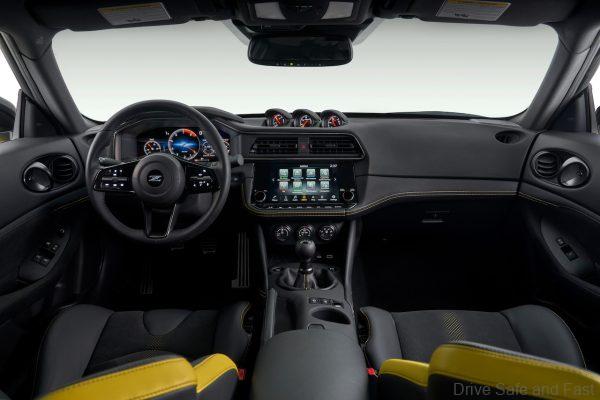
In Japan, this vehicle will feature a different loadout and be called the Nissan Fairlady Z.

